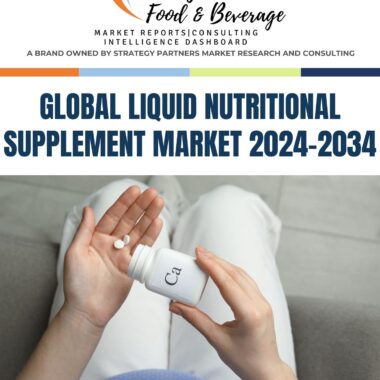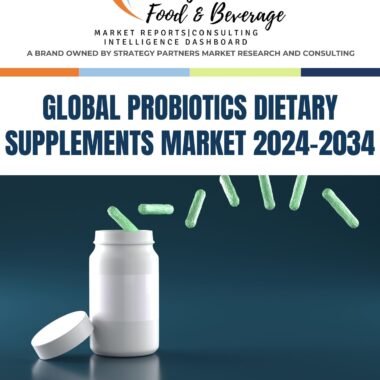Description
Dextrose is a type of sugar that is made from corn starch. Dextrose is a white, odorless, and tasteless powder that is soluble in water. Dextrose is also known as glucose, corn sugar, or grape sugar. Dextrose is a monosaccharide, which means that it is a simple sugar that cannot be broken down into smaller sugars.
Dextrose is used in a variety of food and beverage products, such as baked goods, confectionery, and beverages. Dextrose is also used in a variety of non-food products, such as cosmetics and pharmaceuticals.
The key trends driving the growth of the global dextrose market include:
Increasing demand for dextrose from the food and beverage industry: The food and beverage industry is the largest consumer of dextrose. Dextrose is used in a variety of food and beverage products, such as baked goods, confectionery, and beverages. The growing demand for processed foods and beverages is driving the demand for dextrose.
Growing awareness of the health benefits of dextrose: Dextrose is a good source of energy and carbohydrates. Dextrose is also a good source of electrolytes, such as sodium and potassium. Dextrose is also a good source of vitamins and minerals, such as vitamin B and magnesium. The growing awareness of the health benefits of dextrose is driving the demand for dextrose.
Rising disposable incomes in developing countries: The rising disposable incomes in developing countries are leading to increased demand for dextrose. Consumers in developing countries are increasingly demanding high-quality and nutritious food and beverage products.
The key product segments in the global dextrose market include:
Food grade dextrose: Food grade dextrose is the largest product segment in the global dextrose market. Food grade dextrose is dextrose that is used in food and beverage products. Food grade dextrose is a high-quality dextrose that is free of impurities.
Pharmaceutical grade dextrose: Pharmaceutical grade dextrose is the second largest product segment in the global dextrose market. Pharmaceutical grade dextrose is dextrose that is used in pharmaceutical products. Pharmaceutical grade dextrose is a very high-quality dextrose that is free of impurities.
Industrial grade dextrose: Industrial grade dextrose is the third largest product segment in the global dextrose market. Industrial grade dextrose is dextrose that is used in non-food products, such as cosmetics and adhesives. Industrial grade dextrose is a lower-quality dextrose than food grade dextrose or pharmaceutical grade dextrose.
The key distribution channels in the global dextrose market include:
Direct sales: Direct sales are the largest distribution channel for dextrose. Direct sales involve manufacturers selling dextrose directly to food and beverage companies, pharmaceutical companies, and other industrial users.
Distributors: Distributors are another important distribution channel for dextrose. Distributors purchase dextrose from manufacturers and sell it to food and beverage companies, pharmaceutical companies, and other industrial users.
Online retailers: Online retailers are also becoming an important distribution channel for dextrose. Online retailers sell dextrose to food and beverage companies, pharmaceutical companies, other industrial users, and directly to consumers.
The key challenges facing the global dextrose market include:
Regulatory challenges: The regulation of dextrose varies from country to country. This can make it difficult for dextrose manufacturers to market their products globally.
Health concerns: There have been some concerns about the health risks of dextrose, particularly when it is consumed in high quantities. These concerns have led to increased scrutiny of the dextrose industry.
Lack of awareness of dextrose: Some consumers are not aware of dextrose or the health benefits it offers. This can make it difficult for dextrose manufacturers to market their products to consumers.
Despite the challenges, the global dextrose market is expected to continue to grow in the coming years. This is due to the increasing demand for dextrose from the food and beverage industry, the growing awareness of the health benefits of dextrose, and the rising disposable incomes in developing countries.
Here are some additional thoughts on the global dextrose market:
The market for organic and natural dextrose is growing rapidly. This is due to the increasing demand for organic and natural food and beverage products.
The market for dextrose in developing countries is expected to grow significantly in the coming years. This is due to the rising disposable incomes and the growing awareness of the health benefits of dextrose in developing countries.
Table of Content
1 Market Introduction- Global Dextrose Market
1.1 Market Segmentation- Global Dextrose Market
1.2 Key Trends- Global Dextrose Market
1.2.1 Drivers
1.2.2 Restraints
1.2.3 Challenges
2 Global Market Forecast- Global Dextrose Market
2.1.1 By Region
2.1.2 By Type
2.1.3 By Form
2.1.4 By Application
3 Country Wise Forecast- Global Dextrose Market
3.1 US
3.1.1 Key Trends
3.1.2 Consumer Spending
o Population
o GDP
o CPI
o Spend per Capita
o Spend as a proportion of GDP
3.1.3 Market Forecast- US Dextrose Market
o By Type
o By Form
o By Application
3.1.4 Key Competitors- US Dextrose Market
3.1.5 EXIM
3.1.6 Patents
3.1.7 Scenario Analysis- US Dextrose Market
3.1.8 Opportunity Analysis- US Dextrose Market
3.2 Canada
3.2.1 Key Trends
3.2.2 Consumer Spending
o Population
o GDP
o CPI
o Spend per Capita
o Spend as a proportion of GDP
3.2.3 Market Forecast- Canada Dextrose Market
o By Type
o By Form
o By Application
3.2.4 Key Competitors
3.2.5 EXIM
3.2.6 Patents
3.2.7 Scenario Analysis
3.2.8 Opportunity Analysis
3.3 UK
3.3.1 Key Trends
3.3.2 Consumer Spending
o Population
o GDP
o CPI
o Spend per Capita
o Spend as a proportion of GDP
3.3.3 Market Forecast
o By Type
o By Form
o By Application
3.3.4 Key Competitors
3.3.5 EXIM
3.3.6 Patents
3.3.7 Scenario Analysis
3.3.8 Opportunity Analysis
3.4 Germany
3.4.1 Key Trends
3.4.2 Consumer Spending
o Population
o GDP
o CPI
o Spend per Capita
o Spend as a proportion of GDP
3.4.3 Market Forecast
o By Type
o By Form
o By Application
3.4.4 Key Competitors
3.4.5 EXIM
3.4.6 Patents
3.4.7 Scenario Analysis
3.4.8 Opportunity Analysis
3.5 France
3.5.1 Key Trends
3.5.2 Consumer Spending
o Population
o GDP
o CPI
o Spend per Capita
o Spend as a proportion of GDP
3.5.3 Market Forecast
o By Type
o By Form
o By Application
3.5.4 Key Competitors
3.5.5 EXIM
3.5.6 Patents
3.5.7 Scenario Analysis
3.5.8 Opportunity Analysis
3.6 Italy
3.6.1 Key Trends
3.6.2 Consumer Spending
o Population
o GDP
o CPI
o Spend per Capita
o Spend as a proportion of GDP
3.6.3 Market Forecast
o By Type
o By Form
o By Application
3.6.4 Key Competitors
3.6.5 EXIM
3.6.6 Patents
3.6.7 Scenario Analysis
3.6.8 Opportunity Analysis
3.7 Ireland
3.7.1 Key Trends
3.7.2 Consumer Spending
o Population
o GDP
o CPI
o Spend per Capita
o Spend as a proportion of GDP
3.7.3 Market Forecast
o By Type
o By Form
o By Application
3.7.4 Key Competitors
3.7.5 EXIM
3.7.6 Patents
3.7.7 Scenario Analysis
3.7.8 Opportunity Analysis
3.8 Spain
3.8.1 Key Trends
3.8.2 Consumer Spending
o Population
o GDP
o CPI
o Spend per Capita
o Spend as a proportion of GDP
3.8.3 Market Forecast
o By Type
o By Form
o By Application
3.8.4 Key Competitors
3.8.5 EXIM
3.8.6 Patents
3.8.7 Scenario Analysis
3.8.8 Opportunity Analysis
3.9 Belgium
3.9.1 Key Trends
3.9.2 Consumer Spending
o Population
o GDP
o CPI
o Spend per Capita
o Spend as a proportion of GDP
3.9.3 Market Forecast
o By Type
o By Form
o By Application
3.9.4 Key Competitors
3.9.5 EXIM
3.9.6 Patents
3.9.7 Scenario Analysis
3.9.8 Opportunity Analysis
3.10 Switzerland
3.10.1 Key Trends
3.10.2 Consumer Spending
o Population
o GDP
o CPI
o Spend per Capita
o Spend as a proportion of GDP
3.10.3 Market Forecast
o By Type
o By Form
o By Application
3.10.4 Key Competitors
3.10.5 EXIM
3.10.6 Patents
3.10.7 Scenario Analysis
3.10.8 Opportunity Analysis
3.11 Sweden
3.11.1 Key Trends
3.11.2 Consumer Spending
o Population
o GDP
o CPI
o Spend per Capita
o Spend as a proportion of GDP
3.11.3 Market Forecast
o By Type
o By Form
o By Application
3.11.4 Key Competitors
3.11.5 EXIM
3.11.6 Patents
3.11.7 Scenario Analysis
3.11.8 Opportunity Analysis
3.12 Portugal
3.12.1 Key Trends
3.12.2 Consumer Spending
o Population
o GDP
o CPI
o Spend per Capita
o Spend as a proportion of GDP
3.12.3 Market Forecast
o By Type
o By Form
o By Application
3.12.4 Key Competitors
3.12.5 EXIM
3.12.6 Patents
3.12.7 Scenario Analysis
3.12.8 Opportunity Analysis
3.13 The Netherlands
3.13.1 Key Trends
3.13.2 Consumer Spending
o Population
o GDP
o CPI
o Spend per Capita
o Spend as a proportion of GDP
3.13.3 Market Forecast
o By Type
o By Form
o By Application
3.13.4 Key Competitors
3.13.5 EXIM
3.13.6 Patents
3.13.7 Scenario Analysis
3.13.8 Opportunity Analysis
3.14 Brazil
3.14.1 Key Trends
3.14.2 Consumer Spending
o Population
o GDP
o CPI
o Spend per Capita
o Spend as a proportion of GDP
3.14.3 Market Forecast
o By Type
o By Form
o By Application
3.14.4 Key Competitors
3.14.5 EXIM
3.14.6 Patents
3.14.7 Scenario Analysis
3.14.8 Opportunity Analysis
3.15 Mexico
3.15.1 Key Trends
3.15.2 Consumer Spending
o Population
o GDP
o CPI
o Spend per Capita
o Spend as a proportion of GDP
3.15.3 Market Forecast
o By Type
o By Form
o By Application
3.15.4 Key Competitors
3.15.5 EXIM
3.15.6 Patents
3.15.7 Scenario Analysis
3.15.8 Opportunity Analysis
3.16 Australia
3.16.1 Key Trends
3.16.2 Consumer Spending
o Population
o GDP
o CPI
o Spend per Capita
o Spend as a proportion of GDP
3.16.3 Market Forecast
o By Type
o By Form
o By Application
3.16.4 Key Competitors
3.16.5 EXIM
3.16.6 Patents
3.16.7 Scenario Analysis
3.16.8 Opportunity Analysis
3.17 China
3.17.1 Key Trends
3.17.2 Consumer Spending
o Population
o GDP
o CPI
o Spend per Capita
o Spend as a proportion of GDP
3.17.3 Market Forecast
o By Type
o By Form
o By Application
3.17.4 Key Competitors
3.17.5 EXIM
3.17.6 Patents
3.17.7 Scenario Analysis
3.17.8 Opportunity Analysis
3.18 Indonesia
3.18.1 Key Trends
3.18.2 Consumer Spending
o Population
o GDP
o CPI
o Spend per Capita
o Spend as a proportion of GDP
3.18.3 Market Forecast
o By Type
o By Form
o By Application
3.18.4 Key Competitors
3.18.5 EXIM
3.18.6 Patents
3.18.7 Scenario Analysis
3.18.8 Opportunity Analysis
3.19 India
3.19.1 Key Trends
3.19.2 Consumer Spending
o Population
o GDP
o CPI
o Spend per Capita
o Spend as a proportion of GDP
3.19.3 Market Forecast
o By Type
o By Form
o By Application
3.19.4 Key Competitors
3.19.5 EXIM
3.19.6 Patents
3.19.7 Scenario Analysis
3.19.8 Opportunity Analysis
3.20 Japan
3.20.1 Key Trends
3.20.2 Consumer Spending
o Population
o GDP
o CPI
o Spend per Capita
o Spend as a proportion of GDP
3.20.3 Market Forecast
o By Type
o By Form
o By Application
3.20.4 Key Competitors
3.20.5 EXIM
3.20.6 Patents
3.20.7 Scenario Analysis
3.20.8 Opportunity Analysis
3.21 South Korea
3.21.1 Key Trends
3.21.2 Consumer Spending
o Population
o GDP
o CPI
o Spend per Capita
o Spend as a proportion of GDP
3.21.3 Market Forecast
o By Type
o By Form
o By Application
3.21.4 Key Competitors
3.21.5 EXIM
3.21.6 Patents
3.21.7 Scenario Analysis
3.21.8 Opportunity Analysis
3.22 Thailand
3.22.1 Key Trends
3.22.2 Consumer Spending
o Population
o GDP
o CPI
o Spend per Capita
o Spend as a proportion of GDP
3.22.3 Market Forecast
o By Type
o By Form
o By Application
3.22.4 Key Competitors
3.22.5 EXIM
3.22.6 Patents
3.22.7 Scenario Analysis
3.22.8 Opportunity Analysis
3.23 Malaysia
3.23.1 Key Trends
3.23.2 Consumer Spending
o Population
o GDP
o CPI
o Spend per Capita
o Spend as a proportion of GDP
3.23.3 Market Forecast
o By Type
o By Form
o By Application
3.23.4 Key Competitors
3.23.5 EXIM
3.23.6 Patents
3.23.7 Scenario Analysis
3.23.8 Opportunity Analysis
3.24 Singapore
3.24.1 Key Trends
3.24.2 Consumer Spending
o Population
o GDP
o CPI
o Spend per Capita
o Spend as a proportion of GDP
3.24.3 Market Forecast
o By Type
o By Form
o By Application
3.24.4 Key Competitors
3.24.5 EXIM
3.24.6 Patents
3.24.7 Scenario Analysis
3.24.8 Opportunity Analysis
4 Opportunity Matrix- Global Dextrose Market
5 Conclusions and Recommendations- Global Dextrose Market
6 About Global Food & Beverage




